Shooter Tom Mchale gives us the need to know info on how to use a ballistic computer for cool things like long range shooting.
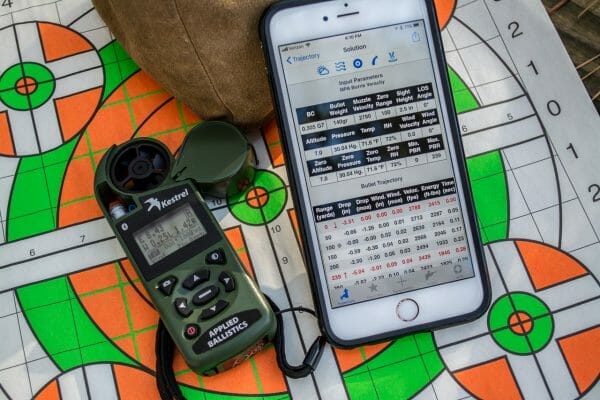
USA –-(Ammoland.com)- While the term “ballistic computer” sounds like an arcane piece of gear from the Apollo Space Program, but its purpose is simple. It’s designed to help you predict where a bullet will land—before you fire.
Knowing How to use a ballistic computer can tell you lots of interesting things like:
- How much a bullet will drop over distance.
- How much the wind will blow your bullet sideways at different distances.
- How fast your bullet is moving at different distances down range.
- Energy on target based on the distance.
- How many clicks to adjust your scope based on its milliradian or minute of angle turrets or reticle.
- The time of flight.
And a much, much more…

When push comes to shove, the most common uses of a ballistic computer are to figure out exactly where to aim to hit a distant target on the first shot. Once you understand the basics of what information a ballistic computer requires, using one to positive effect is easy. Let’s look at some inputs you’ll need to get accurate information about your shot.
How to Use a Ballistic Computer: Information You Need
Ballistic Coefficient
Ballistic coefficient (BC) is a fudge factor that rates how efficiently a bullet flies. A bullet with a high BC close to one (and sometimes over one) will fly faster and farther than one with a low BC, all else being equal. Your bullet manufacturer will publish this information either on the box or on their website. For more, see my article Ballistic Coefficient & Bullet Math: Long-Range Shooting Science.
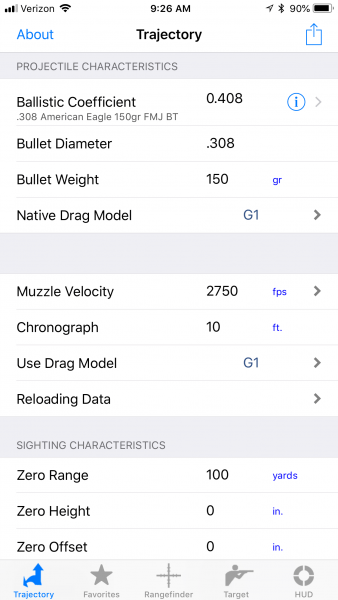
Drag Model
Kind of like matching diesel fuel to diesel engines, you have to match the ballistic coefficient number to the right drag model. We covered it last month so you can get the details here. For now, be sure to match the right ballistic coefficient number with the drag model that your software is using.
Bullet Diameter
Once you get past the nuances like .223 Remington having a diameter of .224 and other such weirdness, this one is pretty straightforward as it’s on the box.
Bullet Length
If you use a Kestrel or other tool without a big library of bullet attribute information built in, you’ll need to know the length of the bullet. This information is a pain to find, but thankfully, the folks at JBM Ballistics have compiled lots of them here.
Muzzle Velocity
What your ammo says on the box may or may not be the real velocity. When you get serious about long range shooting, knowing the exact muzzle velocity of your ammo from your rifle is important. Really important. So, at some point, you must buy or borrow a chronograph to check yours. Be sure to record the atmospheric data when you take readings because velocity varies based on the conditions.
Zero Range
The software needs to know the relationship between your bore and scope when the rifle is zeroed. The ballistic computer doesn’t care if you zero at 25, 50, 100, or 200 yards as long as you tell it what you chose.
Scope Height
You must measure the distance from the midpoint of your optic to the midpoint of the bore. Since the angle between the scope line of sight and bore determine the amount of “lob” and bullet trajectory, this is a critical measurement. Most AR-type rifle scopes are 2.8 inches above the bore. Many bolt-rifles can have a lower scope height measurement in the 1.5-inch ranges. Get a ruler and measure yours!

Barometric Pressure / Altitude
If I zero my rifle, in this case a Ruger Precision Rifle chambered in 6.5mm Creedmoor, here in the South Carolina Lowcountry which is 7 billion feet below sea level, then rely on my calculations when I travel to Colorado and shoot at an altitude of 10,000 feet, I’m not going to be anywhere close to my target. At that high altitude where the air is thin, my exact same bullet will fly a lot farther and faster than it did back at home. So, you’ll need to know the pressure data where you zeroed and where you’re currently shooting.
Depending on your choice of calculator, it may ask for either altitude or pressure.
Temperature
While most of the environmental factors are inter-related, like altitude, pressure, and temperature, for example, you also must know the temperature when you zeroed and where you will be shooting. As with pressure, everything changes with temperature too.
Wind Velocity and Direction
Even if you have to estimate, you’ll want to enter the current wind conditions. Headwinds, tailwinds, and crosswinds all affect trajectory. Even a 10 mph crosswind can blow a bullet several feet sideways during flight, so estimate it as best as you can.
Depending on which ballistic calculator solution you choose, there might be other requirements, but those listed above are the most common.
Where to Get a Ballistic Computer
There are three basic types of ballistic computers.
Web Tools
Many ammunition, optics, and bullet manufacturers have pages on their websites that perform basic trajectory calculations. These are free and easy to use but will be limited regarding functionality. For example, a calculator provided by a bullet manufacturer may focus only on their brand of projectiles. The same goes for a scope vendor. Nevertheless, it’s a great way to get started and you can probably get usable data for most any rifle and ammunition combination. Check out the online calculators from Hornady and Federal Premium as examples.
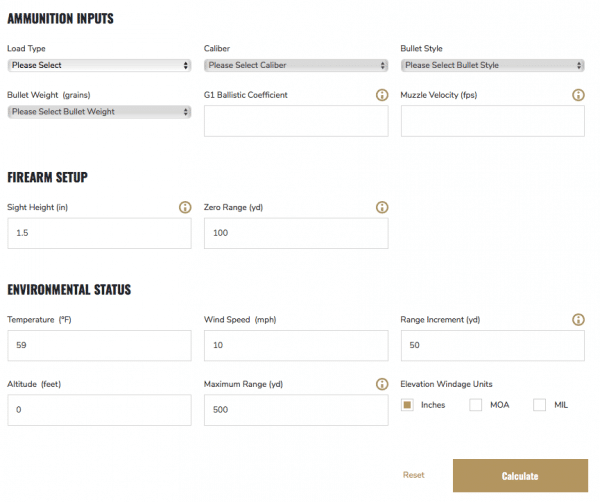
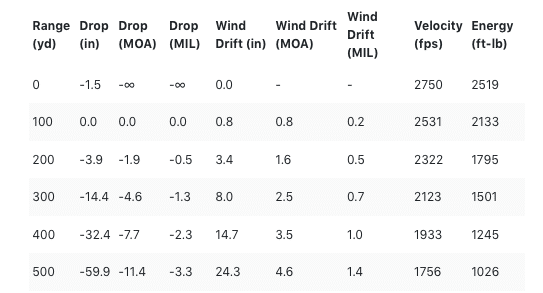
Smart Phone Apps
The screenshots shown here on how to use a ballistic computer are from an iPhone / iPad app called Ballistic AE. It’s a great example of a powerful solution that contains a vast library of projectiles and ready-to-go cartridges. The self-contained library means you can choose your load or projectile from a list and the software already knows all the nitty-gritty details like ballistic coefficient, sectional density, and bullet length. For complete cartridges in the library, the software also knows an approximate muzzle velocity. Of course, that will vary based on your rifle and atmospheric conditions, but it’ll get you close.

Apps are easy to use and present clear and readable information back to you. If you are in range of cell and internet service, many can retrieve nearby atmospheric data automatically, so you don’t have to manually find and enter that information. They only thing they can’t do is measure conditions like temperature and pressure directly. If you want to do that, consider the next type of ballistic computer.
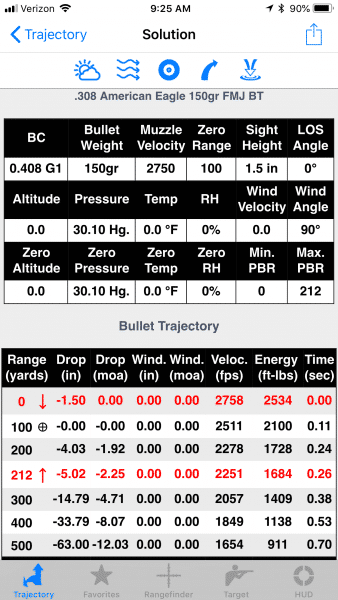
Kestrel Weather Meters with Ballistic Software
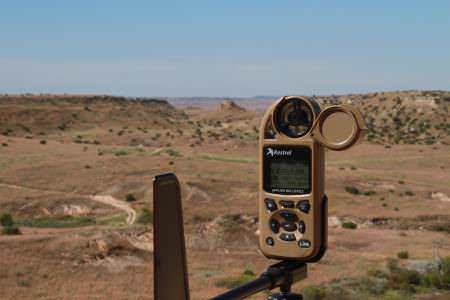
If you want a self-contained solution that has no reliance on the internet, check out the Kestrel Weather Meters with self-contained ballistic computers.
These devices are miniature weather stations and monitor in real time everything from wind speed and direction to pressure to humidity and about a dozen other data points.
The device allows you to create ballistic profiles for your rifle and ammo, so you’ll need to know the data like muzzle velocity, ballistic coefficient, bullet length and other inputs.
If you’re in the field and need to calculate shot data based on where you are and what’s happening right then, these are your Huckleberry.
The easiest way to get started is to tinker with a web calculator like the ones offered by Hornady and Federal Premium.
Once you get the hang of how those work, you can invest a few bucks in a quality Smartphone app to add new capabilities.

About Tom McHale
Tom McHale is the author of the Practical Guides book series that guides new and experienced shooters alike in a fun, approachable, and practical way. His books are available in print and eBook format on Amazon. You can also find him on Facebook, Twitter, Instagram and Pinterest.

So where is the calculation for Coriolis effect?
Good question
Click bait. The lead headline is “How to Zero a Scope and Rifle for Long range Shooting.”
Click on the link and it becomes “How to use a Ballistics Computer…”
Two completely separate subjects.
this article is titled “How to Use a Ballistic Computer for Long Range Shooting” not sure where you came from but I clicked right on it??
“Heart of Texas” is correct, I got the same. The email from Ammoland.com said “How to Zero a Scope and Rifle for Long-range Shooting.” but the link came to this article instead, when it should have gone to this one:
https://www.ammoland.com/2018/08/how-to-zero-a-scope-long-range-shooting/
and Heart of Texas, the email has two articles that we are “click bait” promoting with accurate titles, you both just clicked the links to the wrong articles….doh!
How to Zero a Scope and Rifle for Long Range Shooting :
https://www.ammoland.com/2018/08/how-to-zero-a-scope-long-range-shooting/
How to Use a Ballistic Computer for Long Range Shooting:
https://www.ammoland.com/2018/08/how-to-use-a-ballistic-computer/
THANK YOU!!! These guys aren’t paying attention to simple e-mail instructions.
Should the BE trusted wit hfirearms capable of reaching out to 1000+ yards??? HA HA HA!!!
WRONG you fuking asshole! I went back and tried it again and it did the same! Now after the comments were made, it loads correctly; nice try asshat! Obviously COL, which is likely short for colon, as in asshole, can’t even write a coherent sentence, go back under your bridge!